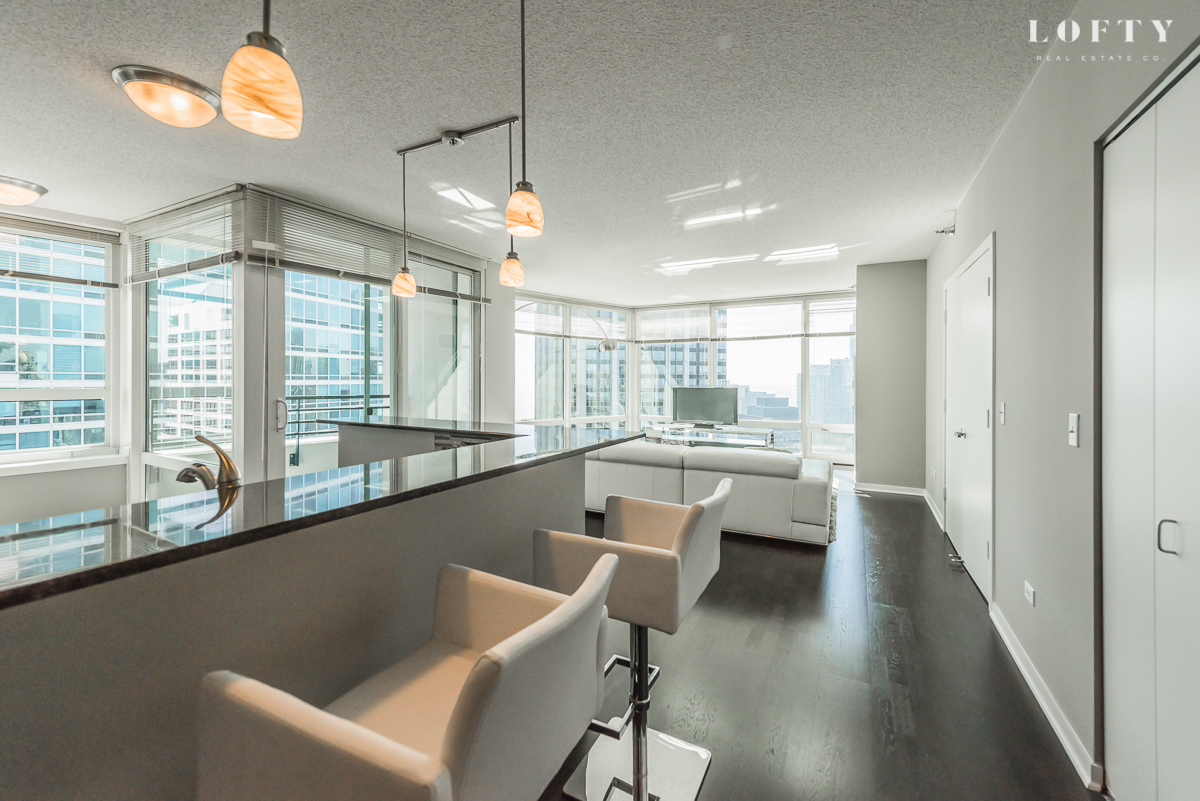To make buying decisions like a professional investor, it is a good idea to familiarize yourself and understand the terms and vocabulary used within this industry, as these will ultimately help you determine if a potential investment is a good one or not. Here at Lofty, we know how important it is to understand the terms as you grow your real estate knowledge and so we have compiled a list for you!
CAP Rate / Capitalization Rate
A common real estate investment term is Capitalization Rate (CAP Rate). Simply put, the CAP Rate looks at the potential return of the investment. The higher the percentage, the larger your return. So, a high CAP Rate is desirable. Real estate investors use CAP Rate similarly in which stock investors use the P/E Ratio (Price-Earnings Ratio). Both CAP Rate and P/E Ratios are formulas that allow for quick, basic calculations that help a potential investor quickly determine if a potential asset is priced at a desirable valuation. Typically, a CAP Rate of over 10% will look to be an attractive deal.
CCR / Conditions, Covenants and Restrictions
These are commitments written into leases and contracts where all parties involved agree to certain terms, which can included performing any actions or inactions regarding the property.
CCRs can occur in several situations and as an owner, CCRs can be written into a property’s purchase document. Also, your tenants, for example, could sign a lease in which they agree to specific certain conditions (i.e. no pets allowed, tenant maintains landscaping, etc).
DCR / Debt Coverage Ratio
A commonly used term by lenders in the underwriting process for loans regarding income-generating properties. DCR is calculated by dividing the NOI (Net Operating Income) by the total debt. An average ratio is 1.20 and higher.
Effective CAP Rate / Effective Capitalization Rate
The Effective CAP Rate, also known as, The “true” CAP Rate, requires more calculations to determine. Typically, if a CAP Rate looks too good to be true, it probably is. While the CAP Rate only uses gross rental income, the Effective CAP Rate takes a look at the whole picture, which is the Net Rental Income. The Net Rental Income (a.k.a. Net Operating Income) factors in all costs associated with the rental property, like HOA fees, insurance, property taxes, vacancies, etc. A key point about the Effective CAP Rate is that it omits both the principal and interest payments because it assumes the cost of the property is fully paid for.
GOI / Gross Operating Income
This is the actual income collected from the property, annually. Which also includes all sources of income, like any on-site laundry, parking, storage, etc., and takes into account any vacancies.
LTV / Loan-To-Value
If you are taking out a loan on your investment property, LTV is important. You can calculate this percentage by dividing the loan by the property’s value. For example, if the loan is $200,000 and the value of the property is $250,000, the LTV is 80%. The lower the LTV, the more equity you have in the property.
Net Cash Flow
For smart investing, any real estate property worth pursuing should generate a positive cash flow. Or at least have the potential to generate a positive cash flow. Specifically, the net income generated each month from the property must cover all monthly expenses.
In the real world, not all real estate properties create a positive cash flow. When you identify a potential investment property, it will be important to do your homework before committing to a deal so you do not find yourself in the red.
NOI / Net Operating Income
This is the income left over after paying all your monthly expenses. So, to calculate your investment’s NOI, subtract your expenses from your GOI. For example, if you take in $10,000 in rental income on a multi-unit building and spent $8,000 on maintenance, insurance, taxes, utilities, and property management fees, your NOI for the month is $2,000.
PITI / Principal, Interest, property Taxes, and Insurance
Basically this is the bottom line to calculate when considering purchasing an investment property with a loan. Typically PITI is calculated on a month-to-month basis and as an overall number.
The month-to-month calculation is the portion of PITI you have to pay each month to stay in good standing, while the overall number is what you could potentially spend on the property over the life of the loan. Both of these calculations will help give you a base in how much rent you should charge.
TCRR / Total Cash Return Rate
TCRR can be viewed as your yearly percentage yield. The TCRR formula accounts for any upfront costs while in the purchase process. TCRR is calculated as (net cash flow + principal payment) divided by the total cost due at signing (down payment), which does not typically include the closing costs. Whereas the CAP Rate assumes that full down payment is ready at the time of closing.
With the final goal of making money is easy for anyone to shoot for, it will be helpful in reaching that goal to learn how to calculate and communicate like a professional investor. When getting started with something new, there is always new terminology and acronyms to go along with it. It is no different when it comes to real estate investments. Taking time now, could be a big benefit for your future real estate portfolio.
If you are of the TL;DR segment of our audience, you may want to work with a trustworthy team of real estate professionals to help guide you down a path of investment success. Here at Lofty, we have the experience, expertise and care to help get you where you want to be and more! Talk to us today and see how we can help you live the life you deserve.
Speak with one of our experts to find out how we can help you build your dream portfolio.



